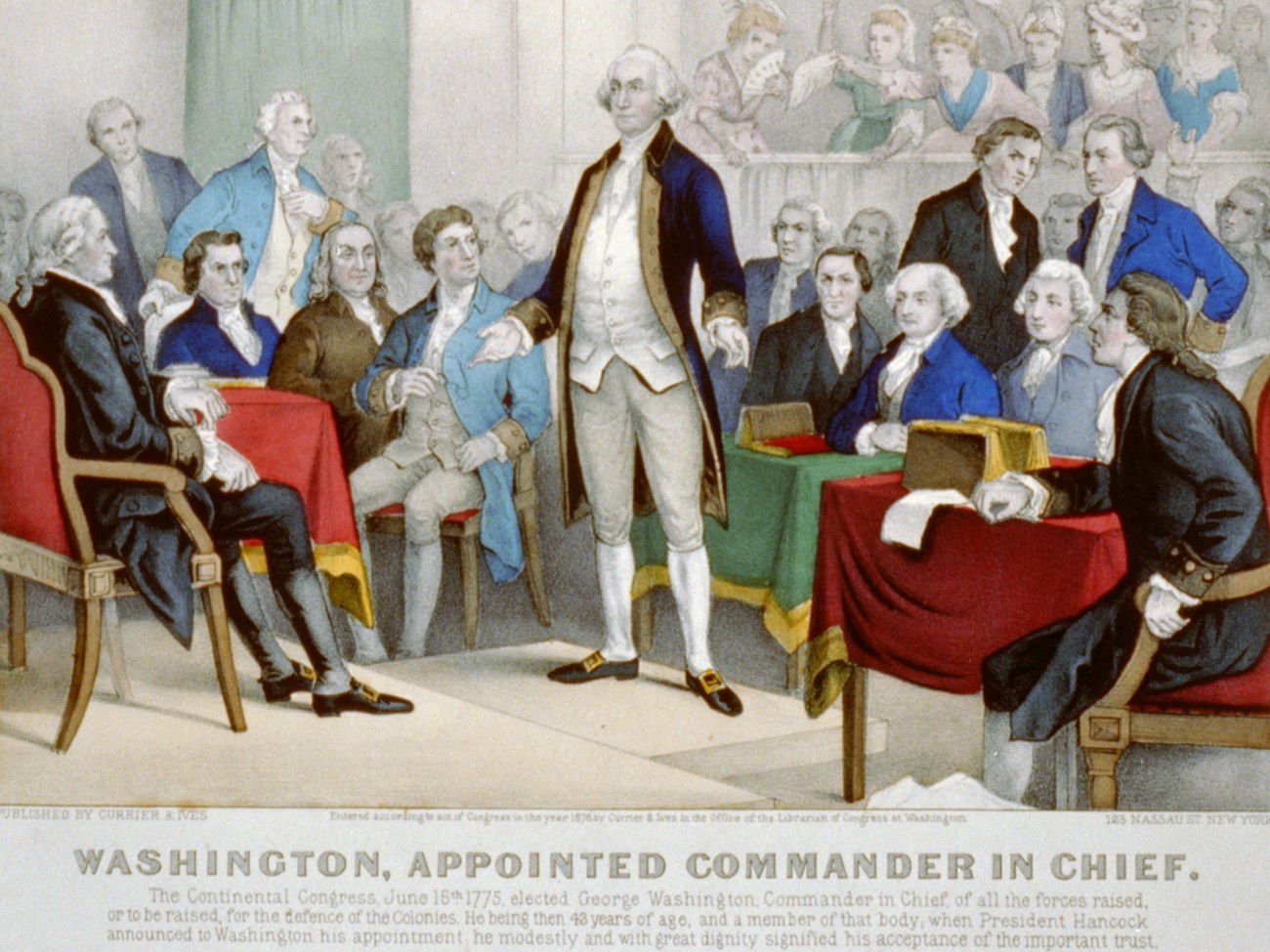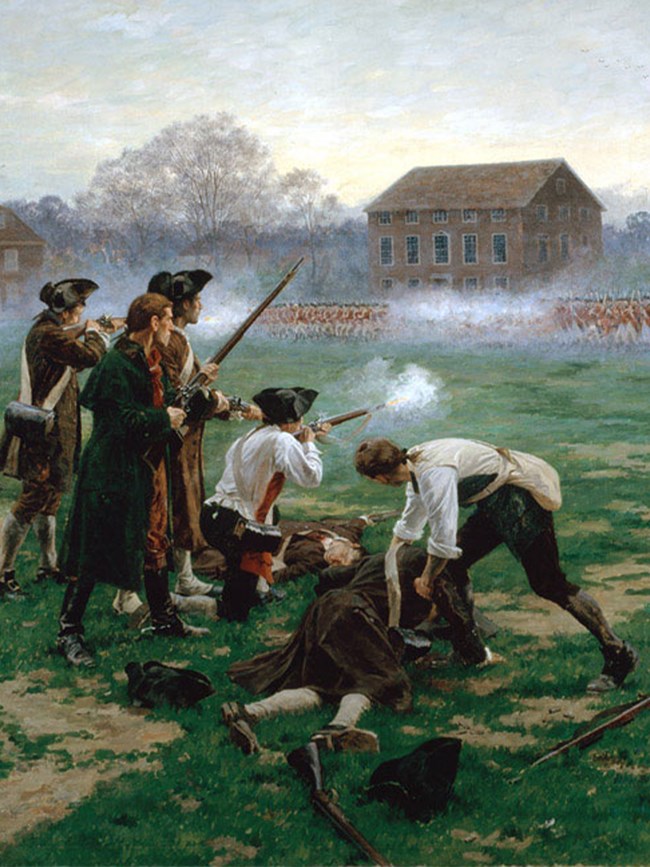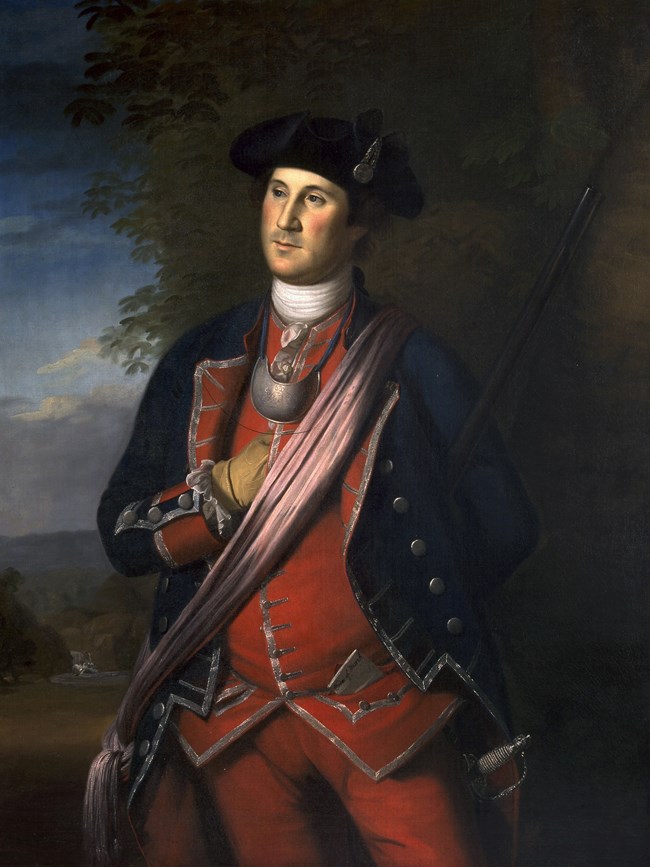Last updated: June 9, 2025
Article
Washington's Appointment as Commander in Chief of the Continental Army

Courtesy Library of Congress, Published by Currier & Ives, 1876. https://www.loc.gov/resource/cph.3b51028/

National Army Museum (UK). https://collection.nam.ac.uk/detail.php?acc=1959-11-302-1
The Spark of War
On April 19, 1775, almost two months prior to the vote for the army formation and Washington's appointment, the conflict began. British soldiers fired shots in two small villages outside of Boston—Lexington and Concord. This event sparked a war that would not only change America, but also the world. The American colonies had not experienced war since the French and Indian War ended in 1763. Lacking standing armies, they relied on militias—ordinary citizens, including farmers and merchants, who answered the call to battle. Many viewed these militias as noble patriots, fearing that a standing army could lead to military dictatorship.The Continental Congress Takes Action
In May 1775, Massachusetts leaders urged the Continental Congress to take control of the militia forces in Boston. Congress debated whether to send more militias or to raise a standing army.George Washington, a Virginia delegate and veteran of the French and Indian War, had a simple perspective on the citizen soldiers. He stated, "To place any dependence on the militia is assuredly resting on a broken staff."2 Congress decided that they should lead the effort. On June 14, 1775, after much debate in Independence Hall, Congress voted to raise a standing army composed of soldiers from Pennsylvania, Maryland, and Virginia to aid in the siege of British-controlled Boston. Their main objective was to defend the colonies until hostilities ceased with Great Britain. However, a crucial question remained: who would lead this army?

Gift of George Washington Custis Lee, University Collections of Art and History, Washington and Lee University, Lexington, Virginia
Choosing a Leader
Massachusetts delegate John Adams believed that in order to unite the colonies in this endeavor, the leader of the Continental Army should be chosen from the southern colonies, particularly Virginia—a significant and influential colony capable of rallying support from the others. George Washington earned considerable recognition in America due to his leadership during the French and Indian War. Dr. Benjamin Rush, a signer of the Declaration of Independence, noted that "You would distinguish him to be a general and a soldier from among ten thousand men."3 Washington's decision to wear a military uniform during the sessions symbolized his readiness, along with Virginia's, to engage in the fight for colonial liberties.The pledge that the army would operate under the civilian authority of Congress stands as one of Washington's greatest contributions to the American Revolutionary War. His leadership helped establish the principle that military authority should be subordinate to civilian governance, which remains a cornerstone of American democracy.
Notes
1. United States, Journals of the Continental Congress, 1774–1789, 1908. pg. 922. James Kirby Martin and Mark Edward Lender, A Respectable Army: The Military Origins of the Republic, 1763–1789, 3rd Ed. John Wiley & Sons, 2015. pg. 44
3. Ron Chernow, Washington: A Life. New York, New York, Penguin Books, 2011, pg. 183
